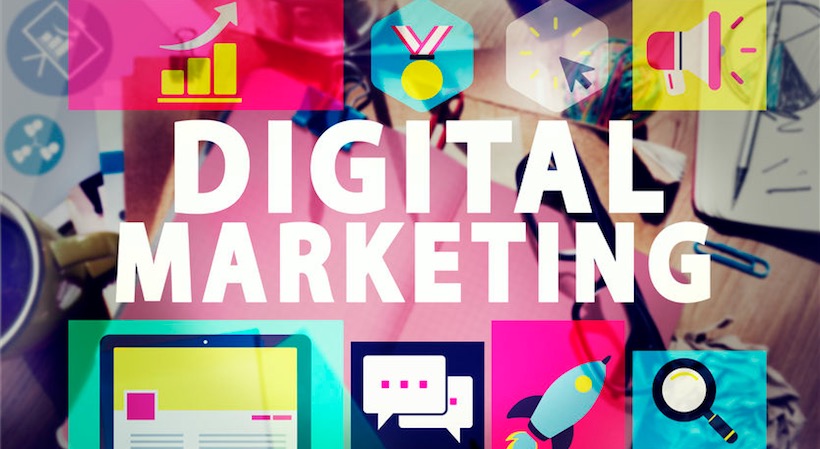When you’re running a new startup, you likely have a small budget for marketing and advertising, which means every dollar (and every data point) counts. How can you optimize your limited ad spend to reach not just the most people, but the right people? Are the traditional online advertising strategies still your best bet, or would your product or service be better served by trying something new?
Based on a thorough analysis of social media trends throughout 2019, it’s clear that the old strategies are shifting as new platforms, habits and user expectations continue to change how companies and consumers communicate online.
If you’re looking to connect with new customers through digital media (especially young millennials and Generation Z, which are the fastest-growing segments of the U.S. workforce) here are the most important marketing lessons for startups from Talkwalker’s Social Media Trends 2020 report.
For Gen Z, authenticity leads to trust
Younger consumers are using social media and technology differently than older millennials and Generation X have. With so much more time and attention being spent on phone browsers and mobile apps, mobile search ad spend is now expected to surpass desktop ad spend for the first time in 2021.
At the same time, these younger audiences are also distrustful of advertising, with 84 percent of millennials saying they don’t trust traditional advertising. This makes it harder for companies to make a lasting connection with young customers through traditional advertising means.
Instead, younger audiences are more attracted to user-generated content (UGC). They’d rather watch the kind of unpolished video they’re likely to see being shared by their friends on TikTok than sit through an over-produced commercial that feels impersonal and artificial. As a result, you may want to experiment with different kinds of video and aesthetic choices in your marketing to see which voice best connects with your target user.
However, when it comes to expressing your brand’s voice, take heed: Millennials and Gen Z audiences also expect the brands they support to express their values, which means they tend to notice which side of an issue a company appears to be on. If you feel strongly about a social, environmental, or other “hot button” issue, making a statement through your messaging and your company’s behavior can go a long way toward connecting with like-minded users for the long-term.
Related: 10 Best Free Digital Marketing Tools for Entrepreneurs
Achieve bigger ROI with smaller influencers
Influencer marketing appears to be contracting from its recent boom, with online conversations on the topic dropping 42 percent year-over-year. That said, one hot subtopic is the unfortunate rise of “fake influencers.” But even as brands and consumers become more skeptical of the true reach and ROI of self-professed “influencers,” 9 percent of consumers still cite influencer recommendations as a factor in their own purchasing process, which means there’s still plenty of opportunity to leverage this space for strong brand engagement.
Micro-influencers, who have smaller follower counts (generally between 2,000 and 50,000 people), stand to gain the most from this shift toward greater accountability within influencer marketing. These micro-influencers tend to become popular in specific niches that may match your target audience’s interests and are often more engaged with their followers than mega-influencers, which can help amplify the effects of their promotions.
For example, this summer, Wendy’s leveraged the social power of about 50 micro-influencers, most of whom had under 30,000 followers at the time, to promote its new lemonade. By spreading the word of their “lemonade in the park” campaign through a variety of smaller influencers instead of relying on one or two mega-influencers, the Wendy’s campaign was estimated to have reached over 720,000 people and earned over 20,000 engagements.
Instead of trying to find big names to align with your brand, look for the micro-influencers who are already using your products or services—or who really should be, based on their interests and activities—and engage them directly. Their support of your brand in a paid ad will feel more natural and authentic to their audience, especially among brands that appeal to specific user niches like athletics, fashion, food and beverage, and outdoor equipment.
Create memorable user experiences, even in your marketing
Augmented Reality (AR) and Virtual Reality (VR) have been popular topics among digital trendwatchers for years, but slow public adoption and a lack of must-see use cases has held them back from becoming must-use tactics… so far. However, as conversational trends show, 2020 may be the year that finally tips these trends into the mainstream.
In 2020, VR had 8.6 times the share of mentions relating to trends as compared to similar conversations in 2019, and AR had seven times the share. This means public awareness of these technologies is growing fast, especially as brands find newsworthy ways to incorporate them into their advertising, marketing and user experiences.
For example, Japan Airlines lets customers pre-experience trips in virtual reality by using its JAL xR Traveler technology, and Lowe’s is using VR and AR for a variety of customer education and enhancement experiences, such as teaching the hands-on skills that are necessary to complete DIY projects.
Using VR and AR to enrich your customers’ journey from discovery through purchase can help them experience your brand in a new and memorable way, which can be very useful for creating a “virtual showroom” or “try before you buy” experience. Likewise, including AR features that can be accessed through a branded app can help augment a user’s engagement with your brand at the point of sale, in-store, on the go, or in the privacy of their own homes. For younger consumers, who expect their brand interactions to be increasingly customized to their preferences, technologies like VR and AR can help create one-of-a-kind experiences that aren’t possible in traditional media.
Sign Up: Receive the StartupNation newsletter!
If you remember nothing else for 2020…
If your target audience skews younger, they’re smart, media-savvy and probably very skeptical of advertising. They’ve become experts in ignoring any media that they consider to be a disruption of their enjoyment while they scroll through their feed.
Your goal as a marketer should be to create the kind of authentic, enjoyable, enriching and illuminating digital experiences that your audience will want to stop scrolling for, rather than the impersonal ads that they can’t help but ignore, skip, block and distrust.
By leaning into your brand’s authenticity, listening to what your customers want (and who they want to be) and empowering your users to help you tell your story, you’ll make more personal connections with your audience and start creating the media and experiences they’ll want to remember.






